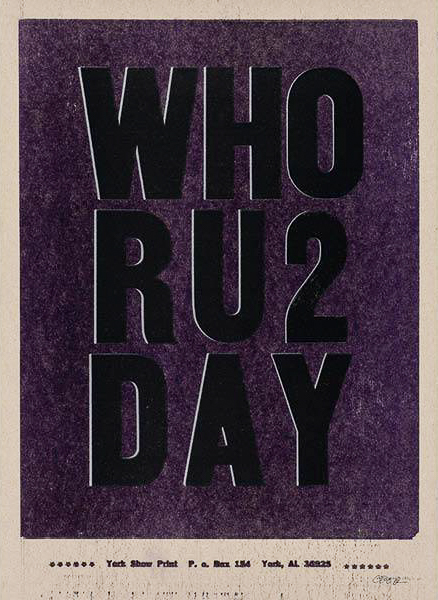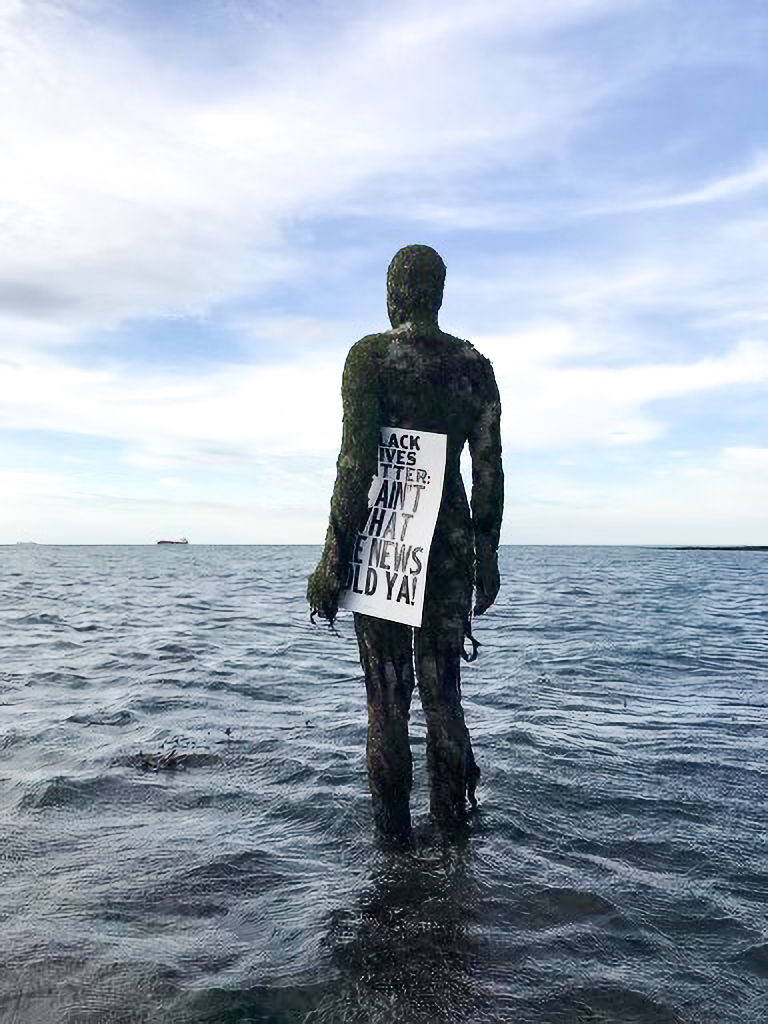Indianapolis is artist Carl Pope’s lifelong home where his experiences have shaped him and where his concepts manifest. A high school photography teacher fueled his imagination in a singular eureka moment: a feminist and peace activist, she pointed-out that horrific images of the Vietnam War circulated in mainstream media changed public opinion about the war.
“Since 1976, I’ve been unpacking her ideas and insights about images and how they function in the public sphere of influence on individuals and movements in contemporary culture,” he says. “My art practice provided me a way to process and visually document my personal experiences and perceptions.”

Pope says his work is a response to his experience as “a Black male growing-up in the 1960s and 70s during the Civil Rights Movement, the Hippy Movement, and the Black Arts Movement.There is always an iconoclastic element in the work.”
Profound and powerful, his art is eye-opening activism. His installations of photography, objects, words and more, are aesthetically satisfying, relatable, and easily engage audiences. His truth-telling pieces are effective catalysts for social change.

He adds, “The major theme in the development of American art and culture is about bucking-up against social conventions as a creative Modernist impulse.” Our American revolutionary spirit is integral when considering this.
For Pope, being an artist means making choices in order to create something new and meaningful, both personally and socially. “The way I solve problems (everyday) always keeps me in touch with my commitment as an artist.”
It also means inspiring other creative people through Facebook posts, long emails, and connections. “Keeping the fires of creativity blazing for myself and people I know is another form of creative activity I enjoy as much as making my own work.” Measured, thoughtful, and well-humored, Pope has that Midwestern genteelness of welcoming conversation and entertaining ideas.
Reframing Perceptions
Some of Pope’s artistry lies in carefully re-examining the way people conventionally view and frame language and words, which then influences shifts in ideas and relationships, “…between things in the world,” he says. “We create epiphany, meaning, novelty in our evolutionary process through thoughtful reconsideration and reframing the truth of what we perceive, understand and imagine.”
The Bad Air Smelled of Roses (2004 – ongoing), his installation of 108 letterpress posters, morphed amid the Black Lives Matter (BLM) worldwide activism in 2020 into an iteration called The Ephemeral Art Project. It was a collaboration with writer and visual activist, Nicholas Mirzoeff; the Women’s Darkroom, an NYC gallery; and his twin sister, Karen Pope, a poet.
“We sent posters to people all over the world and asked the (protest) participants…to photograph them in their communities,” he says. The posters relay phrasings from songs, literature and pop culture that cumulatively reference aspects of the Black American experience.
CARL POPE, ARTIST“Keeping the fires of creativity blazing for myself and people I know is another form of creative activity I enjoy as much as making my own work.”
Mirzoeff, visual culture theorist and Professor in the Department of Media, Culture and Communications at New York University, explains, “These collectively created and distributed posters were a highly effective form of visual activism at the height of the George Floyd Uprising in 2020. People receiving a poster were asked to place it and then post a photo to Instagram, requiring a concentrated engagement. In my own experience, this act of placement was a collective discussion, involving groups of people.”
He continues, “The one I remember as being most moving was at the Carnival held in memory of the anthropologist David Graeber, following his sudden death in September 2020. Posters were placed at the New York Stock Exchange and in Zuccotti Park, creating vertical connections between the Occupy Wall Street movement in 2011, in which Graeber was a leading figure, and the 2020 movement, as well as horizontal ones among the participants. The posters were left on site, and I saw mourners pick them up and take them, as intended, continuing their journey in unknown ways.”




Letterpress posters have long been used in advertising, political campaigns and protests to influence public thought. Pope says, “My collaborators and I wanted to circulate the posters in the streets and on social media globally as a creative response to the BLM protests during the lockdowns due to the COVID epidemic.” A natural and poignant platform, this amplified the messaging.
Likewise, the impact of Pope’s legacy, his work, will be determined by those who continue to share his work. “I consider myself to be fortunate to have my ideas and artworks circulating in popular culture for this long,” he says.
Living his art daily, he adds, “My creative experiment is still active and I am grateful for that. Anything more will be a welcomed surprise.”
